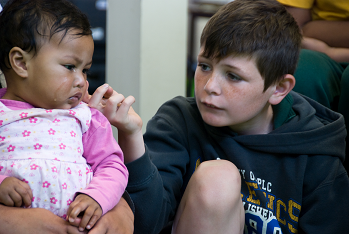Biosphere Education

Originally appears in the Fall 2010 issue
The (North American) classroom is fast becoming a laboratory for preparing young people for biosphere awareness.
In schools across the (continent), students are being instructed in the intricacies of ecosystem dynamics. They are being taught about the need to be more energy efficient and to recycle wastes as well as to nurture wildlife and safeguard biomes. Equally important, classroom pedagogy is beginning to emphasize the impacts that personal consumption habits have on the Earth’s ecosystems. Children are learning, for example, that the wasteful use of energy in the family automobile or home results in the increase of emissions of carbon dioxide into the atmosphere. The heating up of the Earth’s temperature that follows can lead to less rainfall and more drought in other parts of the world, adversely affecting food production and putting more of the world’s poor at risk of malnutrition and even starvation. Children are becoming aware that everything they do — the very way they live — affects the lives of every other human being, our fellow creatures, and the biosphere we cohabit. They come to understand that we are as deeply connected with one another in the ecosystems that make up the biosphere as we are in the social networks of the blogosphere.
This content is restricted to subscribers only.
If you are not yet a subscriber, please consider taking out a subscription here.
If you are an existing subscriber, kindly log in or contact us at info@greenteacher.com for more information.





